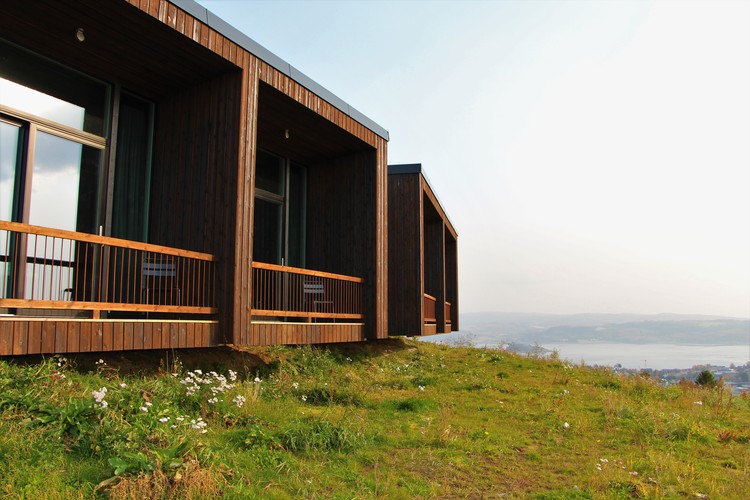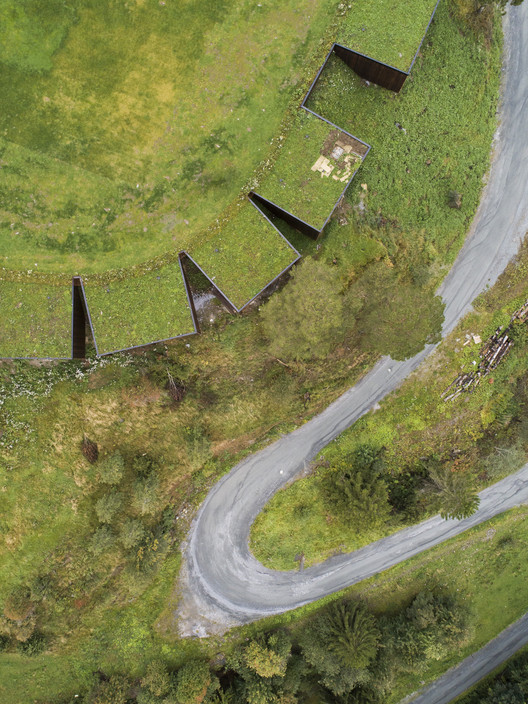
-
Architects: Green Advisers AS
- Area: 1033 m²
- Year: 2020
-
Manufacturers: GRAPHISOFT, Fosseng Treindustri, Nordan, Nordic Door AS, Norsk Limtre, Schindler AS, Stokkan Lys AS
-
Lead Architect: Joakim Dørum

Text description provided by the architects. The “Øyna Cultural-Landscape-Hotel" is a part of Øynaparken, near Straumen, in Inderøy municipality in central Norway. Øynaparken is located on a natural hill above the old Sakshaug Church, with a view over the cultural landscape of the Trondheim fjord. Before the expansion, Øynaparken consisted of a restaurant with conference and event rooms. Øynaparken is managed by the Sakshaug family. The original idea of creating a new platform for marketing agricultural products from their own production has long since become a search for the unmistakable location in the region for the family and is reflected both, in their kitchen made from regional raw materials and in their interest in the surrounding landscape.



The expansion of the facility with 20 hotel rooms was the result of a steadily increasing demand for overnight accommodation in connection with the conferences and family celebrations held here. For the Sakshaug family, it was important that the view over the cultural landscape of the Trondheim fjord be preserved. To achieve this, all hotel rooms were placed on a lower level in the slope. Two hotel rooms each form a unit that slides out of the terrain in a simple shape.

The hotel rooms are accessed via a corridor that is completely underground and adapts to the shape of the hill. At its end, the corridor is connected to the higher-level reception and conference area with an elevator. The lawn in front of the restaurant and conference rooms seem to slide seamlessly over the hotel rooms and reveal the landscape to the north.

All constructions in the ground are made of concrete, while the cantilevered hotel rooms are made of solid wood elements. The standing exterior wooden cladding is kept in dark earth tones, which forms a harmonious contrast to the surroundings. The interior of the hotel rooms is alternated in light and dark wooden panels. In the entrance area, in the rear area of the hotel rooms, and in the adjoining corridor, the concrete construction is exposed, which creates a strong contrast to the high-quality finish of the wooden surfaces in the hotel rooms. Although the extension of the facility was carefully adapted to the topography, it creates new landscape accents through its formal language and fits in well with the owner's overall concept.





























